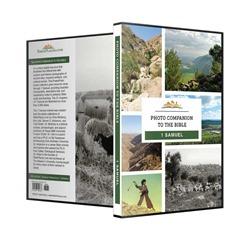Archaeologists believe that they have greater clarity about the roads in the southern Judean desert leading to Edom following the examination of a site near Nahal Gorer. The underlying journal article is available to PEQ subscribers.
Haaretz follows up on the Jerubaal inscription discovery with a report fashioned as a back-and-forth between David Vanderhooft and Christopher Rollston, with the former suggesting the inscription may have been Zerbaal or Ezerbaal, and the latter sticking with his original interpretation of Jerubaal.
Excavations are underway at el-Araj (Bethsaida?), and updates are posted daily on their website.
The 25th and final summer season of excavations at Tell es-Safi/Gath has concluded. They have had a remarkable run.
Haaretz surveys the debate between Erez Ben-Yosef and Israel Finkelstein on the effect of “architectural bias” in drawing conclusions about Israel’s United Monarchy.
Naama Yahalom-Mack writes about the history of iron in ancient Israel.
Naama Barak writes about the mystery of the 1,400 dog burials at Ashkelon during the Persian period.
Bryan Windle identifies the top three reports in biblical archaeology for the month of July.
Construction has begun on a new reception center at the traditional Shepherds’ Field site near Bethlehem.
A music historian plans to restore a 12th-century organ discovered beneath the Basilica of the Nativity in Bethlehem. The instrument is the oldest known example of a pipe organ.
Shea Sumlin is on the GTI podcast talking about what it was like to be one of the first tour groups to be back in Israel.
Joseph L. Rife reviews A Walk to Caesarea: A Historical-Archaeological Perspective, by Joseph Patrich.
2nd edition released: The Archaeology of Qumran and the Dead Sea Scrolls, by Jodi Magness.
One of the books on sale at Logos right now is the Zondervan Handbook of Biblical Archaeology, by Randall Price with H. Wayne House ($9).
John DeLancey’s new Institute of Biblical Israel is launching a new course on biblical archaeology tomorrow.
HT: Agade, Arne Halbakken, Wayne Stiles, Joseph Lauer, Ted Weis, Explorator, Mark Hoffman, Roger Schmidgall, Paleojudaica
